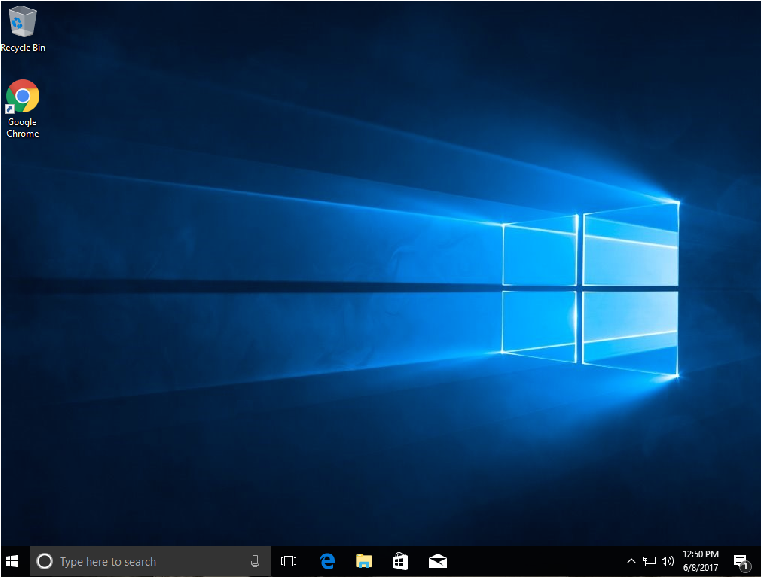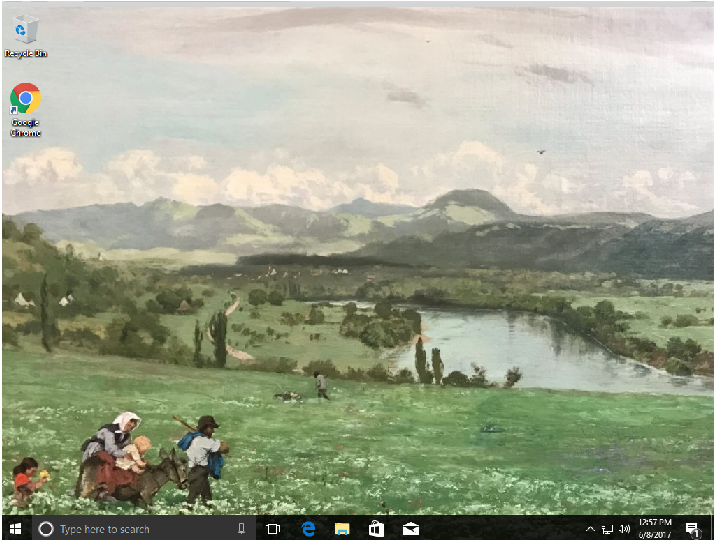Windows 10 Desktop customization
- Shortcuts to the desktop
- A screen saver image
- A locking screen image
Only Enterprise versions of Windows 10 can use the lock screen functionality.
Customizing desktops
This feature requires Bridge. See Setting up Bridge for details.
Procedure
- Go to Policies & Configs > Configurations.
- Select Add New > Windows > MobileIron Bridge > Desktop Settings.
- Enter a Name for the configuration.
- Select one of the following File Delivery options for desktop settings.
- File Upload: upload settings files to Ivanti EPMM.
Override URL: provide override URLs with the settings files to download.
Some fields on the page will change depending on what you select in this step.
- Add a Desktop Background image using one of the following options.
- Select Browse in the Desktop Background section to locate and upload a background image.
Enter the override URL in the Desktop Background section.
Background images can be .JPEG, .PNG, .TIFF, .JPG, or .BMP file types.
- Add a Screensaver image using one of the following options.
- Select Browse in the Screensaver section to locate and upload a screensaver image.
Enter the override URL in the Screensaver section.
Devices accept only the screen saver file type (.scr).
- Check Password-protect Screensaver if you want to require use of a password to unlock screensaver mode.
- Select a Screensaver Timeout period (in minutes).
- Add a Lock Screen file using one of the following options.
- Select Browse in the Lock Screen section to locate and upload a locked screen image.
Enter the override URL in the Lock Screen section.
Lock screen images can be.JPEG, .PNG or .GIF file types.
- Select Add+ to set up application shortcuts to add to device desktops, then fill out the table using the following options.
- Location: this will be desktop, taskbar or start menu.
Target: this will be an application.
For webclips specify the browser to be used. Each browser accepts different commands to create a webclip.
- Description: Specify the title below the shortcut.
- Icon File: Specify the image for the icon file. This must be an .ICO file.
- Select Save.
- Select the new configuration in the Configurations table.
-
Select Actions > Apply to Label > Windows.
This configurations will only apply to Windows 10 Desktop devices.
- Select Apply.
Customized device desktop
The desktop, lock screen, and screen saver settings will take effect based on the associated configuration after the device is signed out and signed back in. For example, the desktop on the left is the default desktop for Windows 10 Desktop devices. The image on the right has been customized using Ivanti EPMM’s Desktop Settings options. Shortcuts do not need a restart to take affect.
Figure 1. Default background image vs. customized background image

